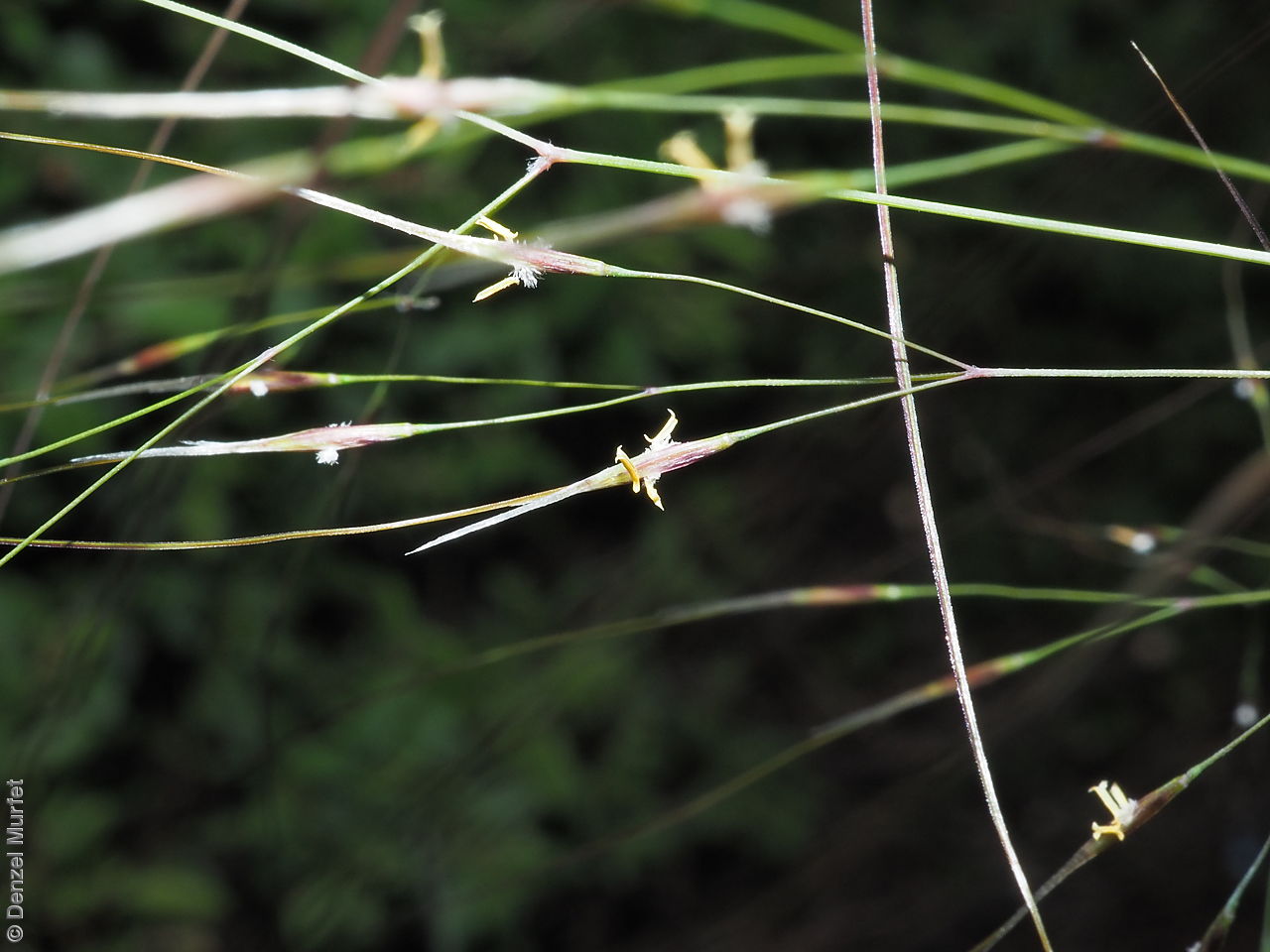
















Botanical art
Prior names
Stipa acrociliata var. minor
Stipa platychaeta
Etymology
Austrostipa from the Latin 'auster' meaning south and the genus Stipa, referring to the genus being allied to Stipa but restricted to Australia. Platychaeta from the Greek 'platys' meaning flat, wide, broad and 'chaite' meaning bristle, referring to its flattened bristle on the awn.
Distribution and status
Found scattered through the central region of South Australia from east to west, growing on sand, limestone, loam and clay, in mallee, woodland and open forest. Also found in Western Australia, New South Wales and Victoria. Native. Common in South Australia. Common in the other states.
Herbarium regions: North Western, Lake Eyre, Nullarbor, Gairdner-Torrens, Flinders Ranges, Eastern, Eyre Peninsula, Northern Lofty, Murray, Yorke Peninsula, Southern Lofty, Green Adelaide
NRM regions: Adelaide and Mount Lofty Ranges, Alinytjara Wilurara, Eyre Peninsula, Northern and Yorke, South Australian Arid Lands, South Australian Murray-Darling Basin
AVH map: SA distribution map (external link)
Plant description
Shortly rhizomatous perennial grass to 1.5 m high with erect branched culms and glabrous nodes. Leaves glabrous, sometimes scabrous with blade flat or weakly inrolled, to 25 cm long and 8 mm wide. Inflorescence a sparse to dense panicle with spreading branches, to 30 cm long; glumes to 15 mm long, straw-coloured, ciliate at the apex, the lower up to 5 mm longer than upper. Flowering between December to February.
Key to this species: perennial grass; culm branching from the base; panicle large and spreading; callus long sharp; awn bristle flat curved and wider at the base than the column; column scabrous. Fruits are dark-brown linear-elliptic lemma to 6 mm long, with a granular surface and covered in white hairs becoming sparse toward apex; coma absent or very sparse; callus long sharp, 1 mm long; awn falcate to 90 mm long, scabrous, bristle flat; palea up to 1.5 mm shorter than lemma, with a line of hairs down the centre. Seeds are yellow-brown grain to 3.5 mm long within the lemma. Seed embryo type is lateral.
Seed collection and propagation
Collect seeds between January and March. Use your hands to gently strip the seeds (lemma) off the mature fruiting spike, those that are turning brown. Mature seeds will come off easily compare to the immature seeds that remain on the spike. Alternatively, you can break off the whole fruit spike to allow some of the seeds to mature further. Place the seeds/spike in a tray and leave to dry for two weeks. No further cleaning is required if only seed collected. If seed spikes collected, use hand to strip off the mature seeds. Store the seeds with a desiccant such as dried silica beads or dry rice, in an air tight container in a cool and dry place. Viability of grass seeds could be very variable, depending on time of seed collections and seasonal conditions.
| Location | No. of seeds (weight grams) | Number of plants | Date collected | Collection number Collection location | Date stored | % Viability | Storage temperature |
|---|---|---|---|---|---|---|---|
| MSB | 5,200 (5.2 g) | 40-50 | 5-Nov-2005 | DJD202 Eyre Peninsula | |||
| MSB | 2,500 (3.96 g) | 3 | 14-Oct-2007 | RJB75473 Northern Lofty | 65% |
Number of plants: This is the number of plants from which the seeds were collected.
Collection location: The Herbarium of South Australia's region name.
% Viability: Percentage of filled healthy seeds determined by a cut test or x-ray.